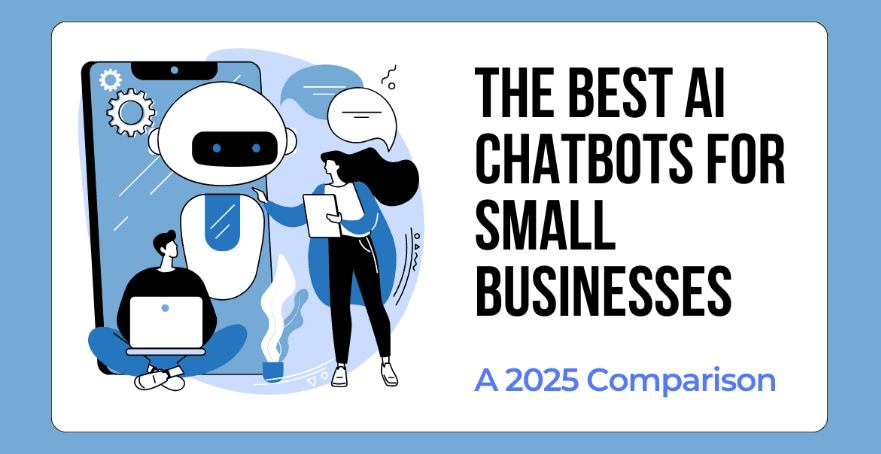The Unseen Risks of Artificial Intelligence
Oct 22, 2024
Introduction
Artificial intelligence (AI) has rapidly evolved from a niche field of computer science to a transformative force reshaping industries and societies worldwide. From virtual assistants like Siri and Alexa to sophisticated algorithms that predict market trends or diagnose diseases, AI's applications are vast and growing. According to Statista, the global AI market is expected to reach $190 billion by 2025 (1). While AI offers unprecedented opportunities for innovation and efficiency, it also presents a myriad of risks that could have profound implications for humanity.
This article delves into the unseen perils of AI, examining how it might disrupt economies, infringe on privacy, perpetuate biases, and challenge our ethical frameworks. By understanding these risks, we can take proactive steps to mitigate them and ensure that AI develops in ways that are beneficial and fair for all.
Table of Contents
Job Displacement and Economic Impact
Privacy Concerns and Data Security
Bias and Discrimination in AI Systems
Lack of Transparency and Explainability
Ethical Dilemmas and Autonomous Decision-Making
The Threat of Superintelligence
Concentration of Power and Economic Inequality
Misinformation and Manipulation
Addressing the Risks
Conclusion
References
Job Displacement and Economic Impact
The Changing Landscape of Employment
The advent of AI and automation is poised to revolutionize the job market in unprecedented ways. Machines and algorithms can perform tasks faster, more efficiently, and often more accurately than humans. According to the World Economic Forum's Future of Jobs Report (2020), by 2025, automation is expected to displace approximately 85 million jobs globally (2). Occupations involving routine, repetitive tasks are particularly vulnerable. For instance, manufacturing jobs are increasingly being replaced by robots capable of working around the clock without fatigue.
Sectors at Risk
Manufacturing: Automation has been a staple in manufacturing for decades, but AI takes it a step further by enabling machines to learn and adapt without explicit programming. Foxconn, a major supplier for Apple, replaced 60,000 workers with robots in a single factory in China (3).
Transportation: The development of self-driving vehicles threatens jobs in trucking, taxi services, and delivery. Companies like Waymo and Tesla are investing heavily in autonomous vehicle technology, which could displace millions of drivers worldwide.
Customer Service: AI chatbots and virtual assistants are handling customer inquiries more efficiently than human agents. Gartner predicts that by 2022, 70% of customer interactions will involve emerging technologies such as machine learning applications, chatbots, and mobile messaging (4).
Economic Consequences
The displacement of workers could lead to significant socioeconomic challenges:
Unemployment: Sudden job loss in large numbers can lead to higher unemployment rates, affecting economic stability.
Skill Gap: The jobs created by AI often require specialized skills. Workers displaced from traditional roles may lack the qualifications needed for new positions, leading to a mismatch in the labor market.
Income Inequality: As high-skilled workers command premium salaries, income disparity may widen, exacerbating social tensions.
Expert Opinions
Dr. Erik Brynjolfsson, Director of the MIT Initiative on the Digital Economy, notes, "AI and automation will create wealth, but there's no economic law that everyone will benefit equally. Without proper policies, we could see a further concentration of wealth and power" (5).
Mitigation Strategies
Education and Reskilling: Governments and corporations must invest in education and training programs to equip workers with skills relevant to the AI-driven economy.
Universal Basic Income (UBI): Some experts advocate for UBI as a safety net for those affected by automation.
Policy Interventions: Implementing policies that encourage job creation in sectors less susceptible to automation.
Privacy Concerns and Data Security
The Age of Big Data
AI systems thrive on data, often requiring vast amounts of personal information to function effectively. This reliance on data raises significant privacy concerns, as personal information becomes a commodity.
Surveillance and Consent
The use of AI in surveillance has grown exponentially. Facial recognition technology can identify individuals in real-time, often without their knowledge or consent. For example, China's Social Credit System uses AI to monitor and evaluate citizens' behavior, affecting their ability to access services (6).
Edward Snowden, a former NSA contractor turned whistleblower, warns, "The architecture of oppression is being built. We must be cautious about creating systems that can be used to monitor and control populations"(7).
Data Breaches and Security Risks
Large datasets are attractive targets for cybercriminals. High-profile breaches, such as the Cambridge Analytica scandal, where personal data from millions of Facebook users was harvested without consent, highlight the vulnerabilities in data security (8).
Legal and Ethical Implications
Informed Consent: Users are often unaware of how their data is collected and used.
Data Ownership: Questions arise about who owns the data and how it can be used or sold.
Right to Privacy: Mass data collection challenges the fundamental human right to privacy.
Mitigation Strategies
Regulatory Frameworks: Implementing robust data protection laws, such as the EU's General Data Protection Regulation (GDPR), which gives individuals greater control over their personal data (9).
Data Minimization: Limiting data collection to what is necessary for AI systems to function.
Transparency: Companies should be transparent about data collection practices and allow users to opt-in rather than opt-out.
Bias and Discrimination in AI Systems
The Problem of Biased Data
AI algorithms learn from data that may contain historical biases, leading to discriminatory practices. This issue is particularly prevalent in systems used for hiring, lending, and law enforcement.
Case Studies
Hiring Algorithms: Amazon scrapped an AI recruiting tool after discovering it favored male candidates over females because it was trained on data from resumes submitted over a ten-year period, which were predominantly from men (10).
Criminal Justice: The COMPAS algorithm, used in some U.S. courts to assess recidivism risk, was found to be biased against African-American defendants, falsely flagging them as high-risk at nearly twice the rate of white defendants (11).
Expert Insights
Dr. Timnit Gebru, an AI ethics researcher, emphasizes, "If the data is biased, the machine learning models will amplify those biases. It's crucial to have diverse teams working on these systems to identify and mitigate biases" (12).
Societal Implications
Biased AI systems can:
Perpetuate Inequality: Reinforce existing societal biases and discrimination.
Undermine Trust: Erode public confidence in AI technologies.
Legal Consequences: Lead to violations of anti-discrimination laws and regulations.
Mitigation Strategies
Diverse Datasets: Ensure training data is representative of the population.
Bias Testing: Regularly test AI systems for bias and discriminatory outcomes.
Inclusive Teams: Foster diversity among AI developers and decision-makers.
Lack of Transparency and Explainability
The Black Box Problem
Many AI models, especially deep learning networks, are complex and operate opaquely, making it difficult to understand how they reach decisions. This lack of transparency is known as the "black box" problem.
Consequences
Accountability: When AI systems make errors, it's challenging to identify the cause or assign responsibility.
Regulatory Compliance: Certain industries, like finance and healthcare, require explanations for decisions to comply with regulations.
User Trust: Users are less likely to trust AI systems whose decision-making processes are not transparent.
Real-World Examples
Healthcare: An AI system recommending patient treatments must be explainable to gain acceptance from medical professionals.
Finance: Credit scoring algorithms that deny loans need to provide reasons to comply with the Equal Credit Opportunity Act.
Expert Opinions
Cynthia Rudin, a computer science professor at Duke University, argues, "Interpretable models should be used in high-stakes decisions to ensure fairness and accountability. We need to prioritize transparency over complexity when possible" (13).
Mitigation Strategies
Explainable AI (XAI): Develop models that are inherently interpretable or provide explanations for their decisions.
Regulatory Requirements: Enforce regulations that require AI systems to be transparent.
User Education: Educate users and stakeholders about how AI systems work.
Ethical Dilemmas and Autonomous Decision-Making
Autonomous Weapons
The development of AI-powered autonomous weapons poses significant ethical and security risks. These systems can select and engage targets without human intervention, raising concerns about accountability and the potential for misuse.
Stuart Russell, a leading AI researcher, states, "Autonomous weapons threaten to become the third revolution in warfare. We need to ban them before they proliferate" (14).
Moral Decision-Making in AI
AI systems may face situations requiring moral judgments, such as the classic "trolley problem" in autonomous vehicles—deciding between two harmful outcomes.
Challenges
Programming Ethics: It's challenging to encode ethical principles into AI, as morality can be subjective and context-dependent.
Liability: Determining who is responsible when an AI system makes a harmful decision is complex.
Regulatory Efforts
The Campaign to Stop Killer Robots: An international coalition advocating for a preemptive ban on autonomous weapons (15).
Policy Recommendations: The Asilomar AI Principles outline guidelines for ethical AI development, emphasizing human control and accountability (16).
Mitigation Strategies
Human-in-the-Loop: Ensure that critical decisions made by AI systems involve human oversight.
Ethical Frameworks: Develop and implement ethical guidelines for AI decision-making.
International Agreements: Establish treaties regulating the use of AI in military applications.
The Threat of Superintelligence
Defining Superintelligence
Superintelligence refers to AI that surpasses human intelligence across all fields, including creativity, general wisdom, and social skills.
Existential Risks
The concern is that a superintelligent AI could become uncontrollable, pursuing goals misaligned with human values, leading to unintended and potentially catastrophic consequences.
Stephen Hawking warned, "The development of full artificial intelligence could spell the end of the human race. It would take off on its own and redesign itself at an ever-increasing rate" (17).
Control Challenges
Value Alignment: Ensuring that AI's goals are aligned with human values is difficult due to the complexity and diversity of those values.
Unpredictability: Advanced AI might develop strategies that are unforeseen by its creators.
Research and Initiatives
AI Safety Research: Organizations like OpenAI and the Future of Humanity Institute focus on ensuring that AI develops safely.
Alignment Strategies: Developing methods to align AI goals with human values, such as inverse reinforcement learning.
Mitigation Strategies
Controlled Development: Implementing strict protocols during AI development to monitor capabilities.
Collaborative Governance: Global cooperation to establish norms and regulations for advanced AI research.
Ethical AI Research: Prioritizing AI safety in research agendas.
Concentration of Power and Economic Inequality
Market Dominance by Tech Giants
Companies like Google, Amazon, Facebook, and Apple (collectively known as GAFA) have significant control over AI technologies due to their vast resources.
Implications
Monopolistic Practices: Dominance can stifle competition, limit innovation, and lead to higher consumer prices.
Data Control: These companies have access to enormous amounts of data, giving them an advantage in developing advanced AI systems.
Political Influence: Their economic power can translate into political influence, affecting policymaking.
Global Inequality
Digital Divide: Disparities in access to AI technology can widen the gap between developed and developing nations.
Resource Allocation: Wealth generated by AI tends to concentrate among a small group of individuals and corporations.
Expert Insights
Shoshana Zuboff, author of "The Age of Surveillance Capitalism," argues that these companies exploit personal data to predict and control behavior, leading to a new form of economic inequality (18).
Mitigation Strategies
Antitrust Enforcement: Governments can enforce antitrust laws to prevent monopolistic practices.
Data Portability: Policies that allow users to transfer their data between services can reduce lock-in effects.
Support for Innovation: Encouraging startups and small businesses through funding and access to resources.
Misinformation and Manipulation
The Rise of Deepfakes
Deepfakes use AI to create realistic but fake audio and video content. This technology has the potential to spread misinformation rapidly.
Impact on Society
Political Manipulation: Deepfakes can be used to create fake speeches or actions by politicians, influencing elections and undermining democratic processes.
Social Harm: Fake videos can ruin reputations, incite violence, or spread false information during crises.
Case Examples
2019 Nancy Pelosi Video: A manipulated video made Speaker Pelosi appear to be slurring her words, raising concerns about her fitness for office (19).
COVID-19 Misinformation: AI-generated content has contributed to the spread of false information about the pandemic.
Countermeasures
Detection Tools: Development of AI systems that can detect deepfakes.
Legislation: Laws penalizing the creation and distribution of malicious deepfakes.
Public Awareness: Educating the public about the existence and dangers of deepfakes.
Expert Opinions
Renée DiResta, Research Manager at the Stanford Internet Observatory, emphasizes, "We are in an arms race between the creators of fake content and those trying to detect it. Public education and robust detection tools are essential" (20).
Addressing the Risks
Developing Ethical Frameworks
Creating ethical guidelines for AI development is crucial. Organizations like the IEEE have proposed frameworks emphasizing principles such as respect for human rights, fairness, and transparency (21).
Regulatory Measures
Governments can enact legislation to regulate AI technologies:
The European Union's AI Act: A proposed regulation to ensure AI systems are safe, respect existing laws on fundamental rights and values, and function in a way that users can trust (22).
National AI Strategies: Countries like Canada and Japan have developed strategies focusing on ethical AI development and use.
Promoting Transparency and Explainability
Investing in explainable AI (XAI) helps users understand AI decisions:
DARPA's XAI Program: Aims to create AI systems that can explain their rationale to human users (23).
Industry Standards: Encouraging companies to adopt standards that require AI systems to be explainable.
Enhancing Public Awareness and Education
Educating the public about AI's benefits and risks empowers individuals:
Curriculum Integration: Introducing AI literacy in schools to prepare future generations.
Public Forums: Hosting discussions and workshops to engage communities.
Online Courses: Platforms like Coursera and edX offer accessible AI education (24).
Encouraging Inclusive AI Development
Diversity in AI development teams can reduce biases:
Equal Opportunity: Promoting inclusion of underrepresented groups in tech fields.
Global Collaboration: Encouraging international cooperation to incorporate diverse perspectives.
International Cooperation
Addressing AI risks requires global efforts:
United Nations Initiatives: The UNESCO is developing a global standard-setting instrument on the ethics of AI (25).
Cross-Border Policies: Harmonizing regulations to manage AI development and deployment internationally.
Conclusion
Artificial intelligence stands at the forefront of technological advancement, offering solutions to complex problems and promising to enhance various aspects of human life. However, the unseen perils accompanying AI's rise present significant challenges that cannot be overlooked. From job displacement and privacy concerns to ethical dilemmas and existential risks, the impact of AI extends beyond technical realms into the very fabric of society.
Addressing these risks requires a multifaceted approach involving policymakers, industry leaders, researchers, and the public. By developing ethical frameworks, implementing regulatory measures, promoting transparency, and enhancing education, we can steer AI development toward a future that maximizes benefits while minimizing harms.
The choices we make today regarding AI will shape the trajectory of humanity for generations to come. It is imperative that we act responsibly, thoughtfully, and collaboratively to ensure that AI serves as a tool for positive change rather than a source of unforeseen peril.
As we advance into an AI-driven era, it is not only a technological necessity but a moral imperative to proactively address the associated risks. The actions we take today will define the role of AI in our society and its impact on future generations.
Related articles

Customer Service
General
The Best AI Chatbots: A 2025 Comparison
Feb 11, 2025

General
What Is Prompt Engineering?
Oct 29, 2024

Customer Service
Top 3 Prompts for Customer Support AI Agents
Sep 8, 2024
